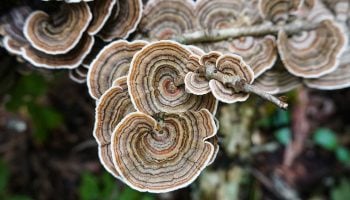SUMMARY
At Third Wave, we come across all sorts of fears related to psychedelics. Over the last few months, multiple people have sent around a recent article published by the Petrie-Flom Center at Harvard Law School claiming that microdosing could cause damage to the heart.
So many people were concerned about this article that we thought it would be helpful to post our perspective.
Background
Written by Samantha Morse and Greg Ferenstein.
Generally speaking, we find the argument less-than-compelling. For one, there are no actual people who have complained about any cardiac issues from microdosing psilocybin or LSD. It’s all theoretical.
Second, the psychedelic that is associated with heart damage, MDMA, is well known to be toxic in high and/or frequent doses. Researchers found evidence that people who consume a monstrous amount of MDMA (multiple doses every week) experience cardiac disease. This is not surprising, but it’s very different from smaller doses of a plant-derived psychedelic for limited periods.
Let’s get into the details:
The Article’s Critique of Microdosing
The article’s author, Dr. Kelan Thomas, PharmD, MS, BCPS, BCPP, is an Associate Professor of Clinical Sciences at Touro University California College of Pharmacy. He asserts that when it comes to LSD and psilocybin “there is compelling theoretical evidence to suggest prolonged and repeated microdosing may cause valvular heart disease (VHD).” As the name implies, VHD is a serious condition where heart valves become damaged, inhibiting the flow of blood into and away from the heart. The symptoms can range from inconvenient (shortness of breath and weakness) to perilous (sudden cardiac death). It goes without saying that this is not the intended outcome for those using microdosing to elevate mood, energy, creativity, and empathy.
However, it’s important to bear in mind that Dr. Thomas’s claims are based on “theoretical evidence” and not observable data. This theory is based on two different sources.
The first is a category of research on pharmaceutical medications with strong serotonin 2B receptor (5HT2B) binding affinity. It is well known that these medications are linked to cardiac disease. Thus, Dr. Thomas draws a tenuous comparison: “LSD and psilocybin (active metabolite psilocin) present concerns for VHD because they too bind to the 5HT2B receptor.” As a result, he concludes that “these psychedelics could potentially cause VHD when ‘microdosed’ for many months to years.”
There are several issues with this logic. First, and most significantly, Dr. Thomas hypothesizes that VHD could occur from microdosing for an extended period of time. However, there is no actual real-world data to support this hypothesis. In other words, there are, so far, no reports of microdosers contracting VHD. Moreover, Dr. Thomas supposes that the harm could come from chronic microdosing for “many months to years”. However, anyone educated in microdosing protocols knows that there are intentionally scheduled breaks (e.g., with the Fadiman protocol, microdosers will generally take four to eight week breaks after each 30-day microdosing cycle). Therefore, microdosers do not chronically expose themselves to the medicine, as one would if they were prescribed a pharmaceutical drug for perpetuity. Lastly, it is worth pointing out that psilocybin and LSD are not pharmaceutical drugs. Even though they may bind with the same receptor as other pharmaceuticals, there is likely a range of other physiological differences between these classic psychedelics and pharmaceutical drugs, which Dr. Thomas does not address.
The second source of theoretical evidence from which Dr. Thomas extrapolates centers on a study of MDMA. As Dr. Thomas reports: “In an epidemiologic case-control study of 29 MDMA users who averaged 3.6 tablets per week for 6.1 years, 28% had VHD confirmed by echocardiography versus none in the gender- and age-matched controls. This evidence demonstrates that chronically dosing another ‘psychedelic’ with 5HT2B affinity, even when only taking a few doses per week, has also been associated with VHD.”
Again, there are a number of issues with applying this study on MDMA to microdosing with psilocybin and LSD. The participants in this study consumed 3.6 tablets of MDMA per week for over six years—this is an extraordinary amount of MDMA, an amount that is not supported by the MAPS study currently in Phase 3 clinical trials. It is well known that MDMA is not an appropriate medicine for microdosing, which is also why Third Wave does not have a Microdosing Guide for this molecule. However, the “3.6 tablets” that Dr. Thomas describes is a strangely unspecific dose. How many milligrams of MDMA are in one tablet? If it is a macrodose, then these study participants are likely facing far more health concerns than just VHD.
The Guardian reports on one case of someone who supposedly consumed 40,000 tablets of MDMA in nine years. Even after he stopped consuming MDMA, “His condition deteriorated and he began to experience recurrent tunnel vision and other problems, including hallucinations, paranoia and muscle rigidity.”
As that case study illustrates, it is certainly not recommended to consume MDMA that frequently. Additionally, as with the previous body of evidence referenced by Dr. Thomas, there is not a direct correlation between the pharmacological makeup of psilocybin and LSD to the substance in question (in this case, MDMA).
Conclusions and Recommendations
By comparing psilocybin and LSD to pharmaceuticals and synthetics like MDMA, Dr. Thomas concludes that microdosing is a potentially unsafe practice, while occasional macrodose experiences mitigate these risks.
If someone were intent on microdosing, Dr. Thomas suggests “proceeding with caution and, at the very least, taking some weeks off between 4-week microdosing intervals.”
Importantly, these recommendations correspond with what we teach at Third Wave, based on the scientifically developed protocols of researchers like Dr. James Fadiman and Paul Stamets. All of these microdosing protocols include “off days” while microdosing, along with scheduled breaks between microdosing cycles.
As a final note, Dr. Thomas encourages “long-term microdosing researchers and microdosing survey app developers to begin collecting routine echocardiography results to systematically evaluate the risk of VHD.” We couldn’t agree more with this suggestion. However, as it stands, there isn’t data to suggest that microdosers are, in fact, contracting VHD. We would love to see this continue to bear out with more rigorous screening.








My wife is 74, 134 lbs and has arortic regurgitation and worried about problems if taking a microdose of psilocybin. Is this a precaution and is it dangerous for her?
Claiming “there haven’t been any reports yet so it’s probably nothing to be worried about” is a potentially dangerous position to take. I’m all for macrodosing, but there simply haven’t been enough studies to support the efficacy or safety of long-term microdosing. Absence of evidence is not evidence of absence.
My brother has had a heart attack and has 2 stents and they told him he needs 1 more. He has Major Depression and some Anxiety.
Should he try Micro dosing??
Hello Gregory Frederick Ferenstein,
As an active athlete and LSD microdoser who happens to wear a heart rate monitor 24/7, I have some finding that might be of interest to you. Feel free to contact me if you’d like to know more.
RC
Hi Y’all
About 6 weeks ago I experienced major heart failure. I’m down to 10% output. My cardiologist gave me a year. I’ve been following all their protocols: sobriety, healthy diet, cardio exercise 45 min 3x weekly.
I’m going to try micro dosing on my non-exercise days.
I want to try to bond more with my son and daughter with the time I have left. I also thought I could be a real time case study for all of my dying brothers and sisters.
I’ll keep you posted weekly.
Stay positive. Remember that passing is just taking off an ill-fitting suit.